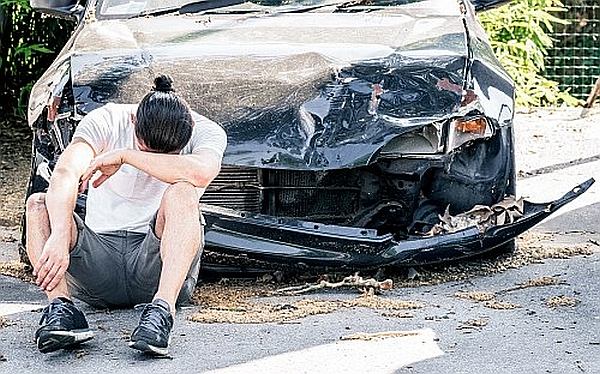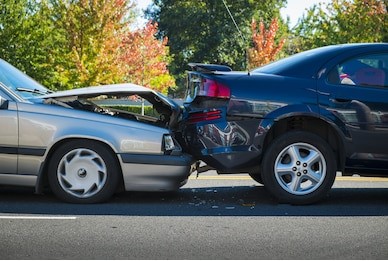Most cases of negligence feature only a single defendant whose conduct is at issue. However, there are instances when the independent negligent conduct of multiple third parties leads to a single injury, and such cases can create confusion for assigning liability. This type of predicament is featured in a recent case from the Georgia Court of Appeals, Granger v. MST Transportation, LLC. In this case, a driver’s car was errantly struck by a negligent driver and, as a result, was sent careening into a tractor-trailer that had been negligently left on the side of the road by a different driver who ran out of fuel.
Prior to the accident, the driver of the trailer, who is employed by MST Transportation, had returned from a trip to Florida and deposited his trailer at the employer’s depot. As he was driving the trailer to the storage site in Atlanta, the driver ran out of gas while driving along the right lane of Mooreland Avenue. The driver turned off the trailer’s flashers, placed three reflective cones near the trailer, called the employer to let it know of the situation, and set off to retrieve fuel. He returned to the trailer several times with fuel before the accident but was unable to start it. While the truck driver was away on his third trip for fuel, the plaintiffs were headed down Mooreland Avenue with their 10-month-old son. The car was in the middle lane as they approached the trailer and were suddenly struck in the rear by another driver and propelled into the trailer, which was only 30 to 40 feet away at the time they were rear-ended. The two plaintiffs and their son were injured in the crash.
Following the accident, the plaintiffs brought a negligence action against the tractor-trailer driver, his employer, and the employer’s insurance carrier. Following discovery, these defendants moved for summary judgment, arguing that they could not be liable for negligence, since a third-party negligent driver’s conduct was an unforeseeable, intervening cause of the plaintiff’s injuries, and consequently the defendants’ conduct could not, as a matter of law, be deemed to have proximately caused the plaintiffs’ injuries. The trial court granted the motion for summary judgment, and the plaintiffs appealed.
In order for a defendant’s conduct to be considered negligent, the conduct must have both directly and proximately caused the injury sustained by the plaintiff. Proximate causation requires that the injury suffered is a natural and probable consequence of the complained-of negligent conduct and not an injury that is unforeseen or otherwise arises from an attenuated series of events. “[P]roximate causation includes all of the natural and probable consequences of the tortfeasor’s negligence, unless there is a sufficient and independent intervening cause.” Cowart v. Widener, 287 Ga. 622, 627-628 (2) (b) (697 SE2d 779) (2010). When a new cause has intervened subsequent to an original tortfeasor’s negligent conduct and “the character of the intervening act . . . was such that its probable or natural consequences could reasonably have been . . . foreseen by the original wrong-doer, the causal connection is not broken.” Ontario Sewing Machine Co., Ltd. v. Smith, 275 Ga. 683, 686 (2) (572 SE2d 533) (2002).
With respect to the current case, the Court of Appeals found that it was a natural and probable consequence of the tractor-trailer driver’s negligent conduct, leaving a trailer motionless in an active lane of traffic, for another driver to find himself unable to avoid striking the stationary vehicle. In reaching this conclusion, the court relied heavily on an earlier case, Gen. Motors Corp. v. Davis, 141 Ga. App. 495 (233 SE2d 825) (1977), in which the court held that a jury could reasonably find proximate cause existed in an analogous situation when a commercial truck was left stalled in an active lane of traffic and a collision involving a third party’s negligence resulted. Even if the tractor-trailer driver may not have been able to anticipate a third party’s negligent conduct would have actually caused the collision, he could nonetheless anticipate the type of harm at issue here, a collision, could result from the negligent conduct. See Smith v. Commercial Transp., 220 Ga. App. 866, 867 (1) (470 SE2d 446) (1996). Accordingly, the Court of Appeals reversed the trial court’s grant of summary judgment.
Although most motor vehicle accidents do not involve the negligent conduct of multiple parties, other forms of complexity can arise in even the most straightforward motor vehicle accident case. If you’ve recently been injured in a motor vehicle accident resulting from the possible negligence of another, you should consider enlisting the help of competent counsel to help determine what options you may have and what complications may arise. The Atlanta motor vehicle accident attorneys at the Law Office of Terrence R. Bethune have numerous years of experience with motor vehicle negligence litigation and can offer you this sort of important legal guidance. Feel free to contact us if you would like a complimentary case evaluation.
Subject Related Articles

Difference Between a Wrongful Death Claim and an Estate Claim
So you’ve recently lost a loved one, and you’re not sure of the differences between a wrongful death claim and an estate claim. Don’t worry,
March 22, 2024

Elderly Driver Accidents in Macon: What to Do
Macon, Georgia, like many communities across the United States, faces a growing population of senior citizens. While this demographic shift brings undeniable benefits, it also
February 22, 2024

Car Accidents
Compensation for Pain and Suffering After an Atlanta Crash
The aftermath of a car accident in Atlanta can leave victims struggling with physical pain and emotional distress. The trauma often leaves invisible scars that
January 19, 2024





